
Torc taps veteran tech strategist as Chief Transformation Officer
(Blacksburg, Va. — March 25, 2021) When revolutionary technology goes mainstream, it changes not only how we work and live, but also how the participating companies operate. Torc Robotics, working with Daimler Trucks to commercialize self-driving trucks, has chosen to manage that change early and has tapped Eddie Amos as its Chief Transformation Officer.
Amos’s leadership experience ranges from introducing early spreadsheet technology, groupware and web services, to the recent industrial internet of things. His role, he says, is to “translate the lessons learned in 35 years of software disruption into best practices for commercializing self-driving trucks.”
Amos joins Torc as a member of Torc’s executive team. “Eddie has already built a strong rapport with our broader leadership team and has provided many valuable insights as we transform from a service to product-focused organization, says Torc CEO Michael Fleming. “I am confident he will help us leverage our innovative processes and passion while we focus on the reliability and consistency necessary for a successful, commercial self-driving truck.”
Amos brings more than 35 years of leadership experience in revolutionary software technologies, ranging from startups to some of the world’s largest companies. During 10 years at Microsoft, Amos served variously as General Manager of Visual Studio, Developer Evangelism, and Partner Enablement, and developed strategies to drive adoption of .NET, C++, and AZURE. He then served as Vice President of Software and Developer Evangelism at Juniper, driving design and delivery of Internet of Things networking and connectivity solutions. His work as Chief Technology Officer and Senior Vice President of Engineering and Product helped grow startup Meridium into a sector leader in asset performance management. When Meridium was acquired by GE Digital, he served as Chief Technology Officer and led successful integration of both teams. Amos was later made a Corporate Officer at GE and named Sr. Vice President of Digital Engineering. Former colleagues cite his passion, vision, clarity and focus on what matters as keys to the success of his teams.
“I’m excited to bring new perspectives to the Torc team,” says Amos. “My role, in many ways, is taking the best of what I’ve learned so far in my career and putting that into practice to allow us to run more efficiently and faster while taking the opportunities in front of us.”
According to Amos, he thrives when he can work with incredibly smart people to build strong teams. “I want the spotlight on the customer and the team. When you take the focus off the team and the mission, people get distracted. “We know what true north is and it’s all-hands-on-deck to get there. Torc has assembled one of the most talented teams that I’ve had the privilege to work with in my career to get us across the finish line.”
The passion and cohesion on the Torc team induced Amos to come out of an early retirement to join the company. “The Torc team is one of the smartest sets of people I’ve ever worked with in my life,” says Amos. “The world’s going to be amazed at what this group of individuals is going to do.”
Amos’s interests include business mentoring, with an eye for combining community outreach and technology education initiatives, found purchase in the New River and Roanoke Valleys’ business community.
Since 2019, Amos has been a member of the Go Virginia board, helping with their efforts to bring more high-tech jobs to the Roanoke and New River Valleys. He’s also on the boards of the Roanoke Higher Education Center and the Virginia Innovation Council, working to foster the regional start-up community.
About Torc Robotics
Torc Robotics, headquartered in Blacksburg, Virginia, is an independent subsidiary of Daimler Truck AG, the global leader and pioneer in trucking. Founded in 2005 at the birth of the self-driving vehicle revolution, Torc has 16 years of experience in pioneering safety-critical, self-driving applications. Torc offers a complete self-driving vehicle software and integration solution and is currently focusing on commercializing self-driving trucks. “Trucking is the backbone of the U.S. economy, delivering food and products to every community in the country,” said Torc CEO Michael Fleming. “Daimler has led innovation in trucking for more than a century, from the first truck to driver assist technology. Torc is working with Daimler Trucks to commercialize self-driving trucks to make our roads safer and better fulfilling our mission of saving lives.”
18-Ton Vision: Developing Perception for Torc’s Self-driving Trucks
Picture this: A freight truck travels down the highway. Because of the truck’s size, its driver has better visibility than other vehicles on the road, but they cannot see everything. A compact car moves into the passing lane and enters the truck’s blind spot. Ahead of the truck, a minivan slams on its brakes to avoid hitting the vehicle in front of it. The driver of the freight truck must perceive these dangers, decide how to react, and immediately maneuver to prevent multiple accidents and keep the truck upright.
This scenario would confound human drivers with millions of miles of driving experience. Driving conditions can change in the blink of an eye, but, on the road, there is no room for mistakes. A delayed reaction can be the difference between life and death.
How does Torc’s self-driving truck system see, think and act in these situations?
Perception at Torc
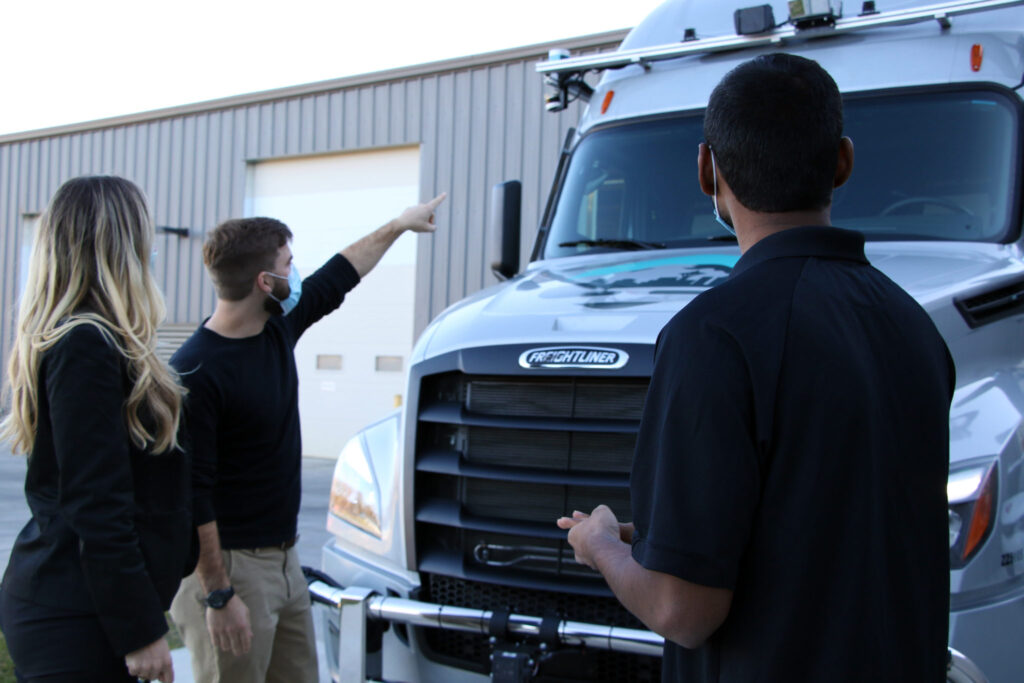
The Perception team at Torc is critical to our mission of safe driving. The team is composed of expert engineers, each with their own specialty, who have decades of experience developing self-driving technologies and a passion for robotics. The hardware suite for our trucks includes different sensors, such as RADAR, short and long-range LiDAR and cameras. The Perception team creates algorithms that translate raw sensor information to ensure that our vehicles can accurately visualize, localize and react appropriately to their environment.
Our self-driving system converts raw sensor data into representations of the real world in real-time as it traverses the highway. The Perception team creates the pathways to turn that data into actionable information.
As part of Perception, Mapping and Localization teams create Torc’s highly detailed HD maps that, along with GPS and other systems, allow our vehicles to navigate their routes.
Active Sensing and Information Fusion teams create algorithms that combine sensor data to detect and identify objects for Torc’s autonomous driving system. We also utilize machine learning to analyze this data to classify objects in further detail. For example, machine learning can identify different colored traffic lights or determine the difference between a pedestrian and a light post.
With their expertise and tools, Perception gives unparalleled vision to Torc’s self-driving system. Other software engineering teams at Torc then use this information to develop behaviors for the system.
The Culmination of Our Work
Since its inception over 15 years ago, Torc has successfully developed and deployed self-driving technology across a wide array of industries. The Perception team has abundant experience giving sight to our self-driving solutions for large, heavy-duty vehicles in the defense and mining industries that must be dependable, accurate and able to operate under a variety of conditions. This makes Torc uniquely positioned to tackle the many challenges of automating trucks. Trucks and truck driving are, by their very nature, radically different from that of passenger vehicles, and our Perception team is working to solve the specific challenges that come with developing perception for trucks.
Focusing on the Big Problems
Long-haul trucking accounts for 69% percent of all freight activity in the U.S. Torc has chosen to focus on this environment for self-driving trucks because of the reduced complexity. Highways provide a well-maintained environment with a more predictable set of scenarios than urban or rural roads. Specifically, coding for self-driving on highway settings allows our engineers to focus on specific problems. Highway signs and lane markings are also regular and consistent, making them easier for cameras and sensors to spot and interpret. Many rural roads, on the other hand, do not have such lines or signs. The types of objects that must be identified and the corresponding maneuvers a truck must perform on a highway setting are significantly reduced. Highway driving does include challenging scenarios such as merging and passing on multi-lane highways. This is why we still perform rigorous testing in simulation and closed courses – and why high-fidelity perception is so important at highway speeds.
Knowing Where We Stand
Our self-driving trucks make their journey using a combination of Torc’s proprietary HD maps, GPS and state estimation software to navigate their routes. GPS installed in the truck hardware helps with navigation, but while GPS can provide general guidance on highways, reliability and precision can vary. Used by itself, GPS could lead you into a lake instead of your intended on-ramp. Also, there are still large swaths of the country that lie in GPS degraded or denied areas. Autonomous driving requires a solution that provides precision. Our Mapping and Localization team can map and maintain routes for accuracy with our own vehicles using sensors, software and other localization data.
Solutions of Epic Proportions
Freight trucks are larger than and not as maneuverable as consumer vehicles. These differences translate into slower acceleration and increased braking distance than their four-wheeled counterparts. Freight trucks weigh around 35,000 pounds on average and require more than twice the length of a passenger vehicle to come to a complete stop. This stopping distance can double when a truck is carrying a maximum load of 80,000 pounds. As a result, truck handling is limited and maneuvering requires more surface area than passenger vehicles. Truck driving behavior must be designed to accommodate these facts. Our engineers take these differences into account when tuning the system to help the truck decide how much distance is needed to follow other vehicles safely or how much space is needed to prevent the truck from jack-knifing in a turn.
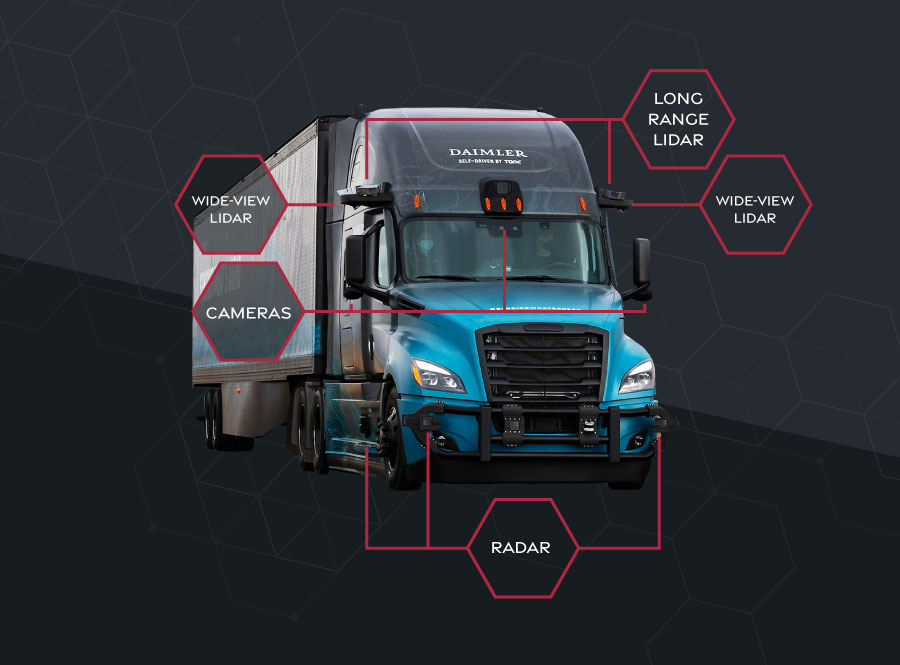
Seeing Everything
Because of their size and the additional length of their trailers, trucks are naturally self-occluding. Large portions on all four sides of the truck are blind spots for the driver. Passenger vehicles driving in these spots are difficult, if not impossible, to see. Our engineers meet some of the unique challenges that trucks present by adding a robust sensor suite that improves visibility around the truck. Long-range LiDARs, for example, provide object detection farther down the road to accommodate the trucks’ need for increased stopping distance. Sensors that provide coverage at the truck’s blind spots can assist with complex scenarios such as merging into multiple lanes of fast-moving traffic. As we continue to tackle the unique challenges of automating large semi-trucks, each improvement brings us one step closer to our goal: a robust autonomous driving system that increases road safety and freight efficiency.
What It Takes to Be Part of Perception
Now that you know some of the challenges our Perception team is tackling with trucking, you may be wondering, “What makes an ideal Perception team member?” Our team members are a curious collective of problem-solvers who aren’t afraid to ask questions. The belief that self-driving technology can help save lives fuels their pursuit of innovation. They approach problems related to perception with a beginner’s mindset and craft solutions using their extensive expertise. They’re also open to continual improvement and find fulfillment working as a team to overcome the hard problems facing perception and artificial intelligence. Learn more about Torc software engineers.
Join us!
If you enjoyed reading about how our Perception team is overcoming challenges related to trucking and would like a rewarding career with opportunities to learn, innovate, and contribute to a world-changing mission, we would love to hear from you. Interested in helping engineer the future of autonomous trucking?
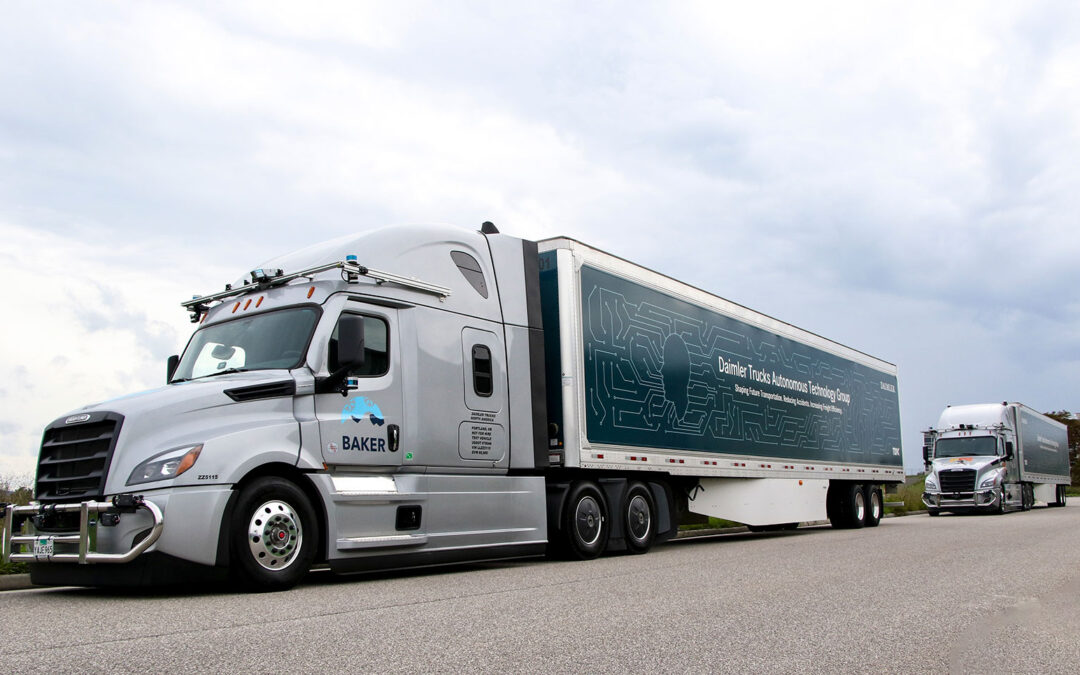
Torc to scale self-driving fleet with next-gen Daimler test trucks designed for its L4 system
(Blacksburg, Va.) Torc Robotics will scale its self-driving truck testing in the Southwest in early 2021 using an enhanced prototype truck developed with Daimler Trucks North America. This new generation of Freightliner Cascadia test trucks bolsters Torc’s capability to develop and test its Level 4 self-driving technology.
The test trucks, internally known as ‘Gen 2’ are the second iteration of trucks jointly developed by the trucking and technology companies. This milestone is one of many along the Daimler-Torc journey to realize their vision of becoming the standard in self-driving trucking and advance their mission of saving lives.
Torc and Daimler Trucks’ ultimate goal is to reinvent the truck by co-developing a Level 4 Freightliner Cascadia which includes safety-critical redundancy components, as well as the seamless integration of additional computes and hardware required for self-driving technology.
“To meet the redundancy and performance requirements of a self-driving truck, the traditional truck chassis must be reinvented. Just like any major innovation, it requires a stair-step approach toward the final product. We are taking this one step at a time, with safety as our guiding principle,” said Michael Fleming, Torc’s CEO. Torc has been commercializing its self-driving technology in heavy-duty applications for more than a dozen years. Fleming says Torc is directly applying this experience to solve the challenges ahead.
In 2019, Torc and Daimler Trucks created a unique relationship in the trucking industry by combining the pioneer and leader in trucking and a pioneer and leader in self-driving technology. This combination of complementary technologies created the foundation for Torc and Daimler Trucks to bring self-driving trucks to market within the decade.
“We knew from the outset that self-driving technology cannot be commercialized without an OEM. In trucking, there are only a handful of OEMs [original equipment manufacturers] and we were fortunate to join the industry leader,” Fleming said.
The goal: a Level 4 integrated truck that provides true customer value
“Our partnership with Torc is critical to our efforts to commercialize a Level 4 highly automated truck,” said Roger Nielsen, president, and CEO of Daimler North America. “Torc’s experience with developing self-driving technology and their focus on safety makes them the ideal partner. Our joint goal is a Level 4 integrated truck that provides true customer value.”
Market-ready self-driving trucks must emulate the actions of the most experienced and safe truck drivers. The partners are developing software and hardware that is seamlessly integrated to reliably handle failures of safety-critical vehicle components, such as braking, steering, power distribution, and messaging.
The team’s vision for a Level 4 vehicle platform is one in which component redundancies and software behaviors work together. In the case of a brake failure in a Level 4 truck, redundancies would maintain the vehicle’s ability to decelerate and stop without human intervention. Torc’s self-driving software would then be able to maneuver to a safe location so a support crew could service the brake system, according to Torc founder, Michael Fleming.
Another integral behavior the team is working to replicate is the way experienced truck drivers are able to feel component failures. “Our software engineers are working with highly skilled truck drivers to understand this experience and transition this human intuition into embedded sensors and algorithms,” Fleming said.
Iterative truck generations for development
Torc and Daimler Trucks North America expect to develop multiple iterative test truck models before they release a self-driving truck for commercial customers. The prototypes will incorporate many lessons learned from testing and development since the partners started working together in 2019.
The upgrades included in the ‘Gen 2’ prototype truck are specifically designed to bolster the testing effort and accelerate data collection to assist in machine learning and algorithmic development.
Improvements in data collection and transfer will help the development team expand capabilities quickly and safely, supporting Torc’s effort to scale its test fleet in multiple locations. Additional sensor density and coverage will assist in overall high-fidelity perception performance and long-range sensing power, critical for highway driving.
Both companies have stated that they will only deploy self-driving trucks when they are safe and reliable – not by a set date. Fleming is convinced the team will meet its goal, because “We are two pioneers joining forces – we understand the complexities of commercializing self-driving technology. Our mission is to save lives and our vision is to become the standard in self-driving trucking.”
About Torc Robotics
Torc Robotics, headquartered in Blacksburg, Virginia, is a member of the Daimler Trucks family, the global market-share leader and pioneer in trucking. Founded in 2005 at the birth of the self-driving vehicle revolution, has 15 years of experience in pioneering safety-critical, self-driving applications. Today, vehicles using Torc’s self-driving technology operate on multiple continents. The firm offers a complete self-driving vehicle software and integration solution and is currently focusing on commercializing self-driving trucks. “Trucking is the backbone of the U.S. economy, delivering food and products to every community in the country,” said Torc CEO Michael Fleming. “Daimler has led innovation in trucking for a century, from the first truck to driver assist technology. In partnership with Daimler, Torc will commercialize self-driving trucks to make our roads safer and better fulfilling our mission of saving lives.”
Daimler Trucks and Torc partner with Luminar to enable automated trucking – Daimler Trucks acquires minority stake in Luminar
Automotive World
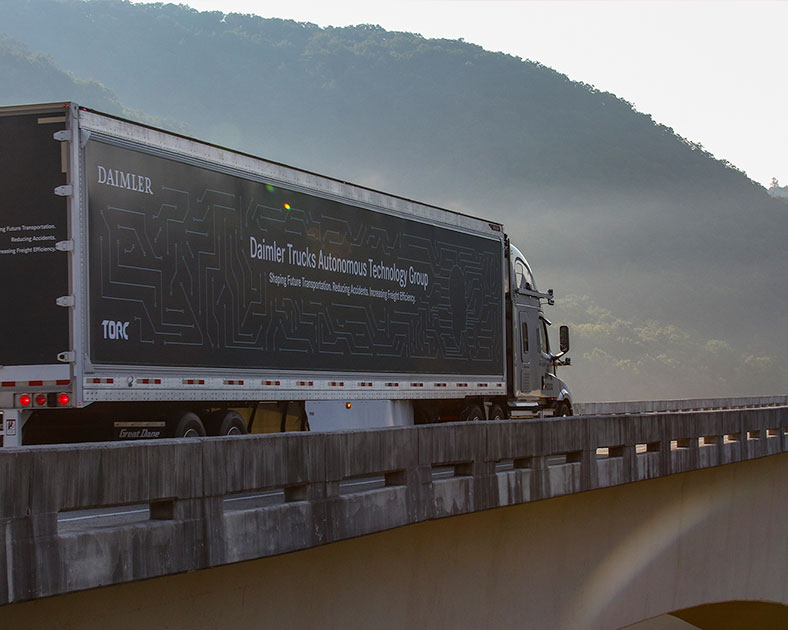
Torc Robotics, Daimler Trucks release video of self-driving truck testing
(Blacksburg, Va.) Torc Robotics and Daimler Trucks have released a video showing footage of their testing of self-driving trucks on a closed-course on Virginia’s Smart Road and along highways in the Blacksburg, Virginia area, including I-81. Scenes include driving in varying weather conditions, up steep grades, and along construction zones.
The video was released in celebration of one year of accomplishments by the partnership and to announce expanded testing in New Mexico. Torc has been testing Freightliner trucks, equipped with Torc’s self-driving vehicle system, on public highways in Virginia since last September.
Virginia is an ideal testing location for Torc Robotics, which has tested numerous vehicle platforms on public roads for 14 years. “Virginia’s highways provide a combination of steep grades, varying traffic types, and weather that has allowed us to expand and test our capabilities,” said Torc CEO Michael Fleming. “Torc will continue to test in Virginia, as our headquarters location provides an ideal area for our development team.” Last month, Virginia’s Governor Ralph Northam announced Torc’s plans to significantly expand the product development team in Virginia.
All automated runs require both a safety conductor and a highly trained safety driver certified by Daimler Trucks and Torc Robotics. All safety drivers hold a commercial driver’s license and are specially trained in vehicle dynamics and automated systems.
Due to the pandemic, Torc halted daily on-road testing in March, but was able to resume in June, following stringent safety protocols to help protect its team. Although all automated runs require both a safety driver and safety conductor to be in the cab together, physical separation measures and additional cleaning protocols have been put in place.
During the months that Torc and Daimler Trucks paused their daily on-road testing, the partners concentrated on scalability, improving infrastructure tools and the simulation platform, and extending the software capabilities. “Instead of daily on-road testing, we strengthened our foundation, which has catapulted our abilities,” said Torc CEO, Michael Fleming. Trucks equipped with the next-generation system begin testing this fall.
Earlier this month, Torc and Daimler Trucks North America announced an expansion of their on-road testing. In addition to ongoing on-road testing in Virginia, the team is now testing in New Mexico and Torc is establishing a testing center in Albuquerque.
Daimler Trucks and Torc are committed to commercializing self-driving trucks within the decade. Both companies, however, have stated that safety determines the timeline.
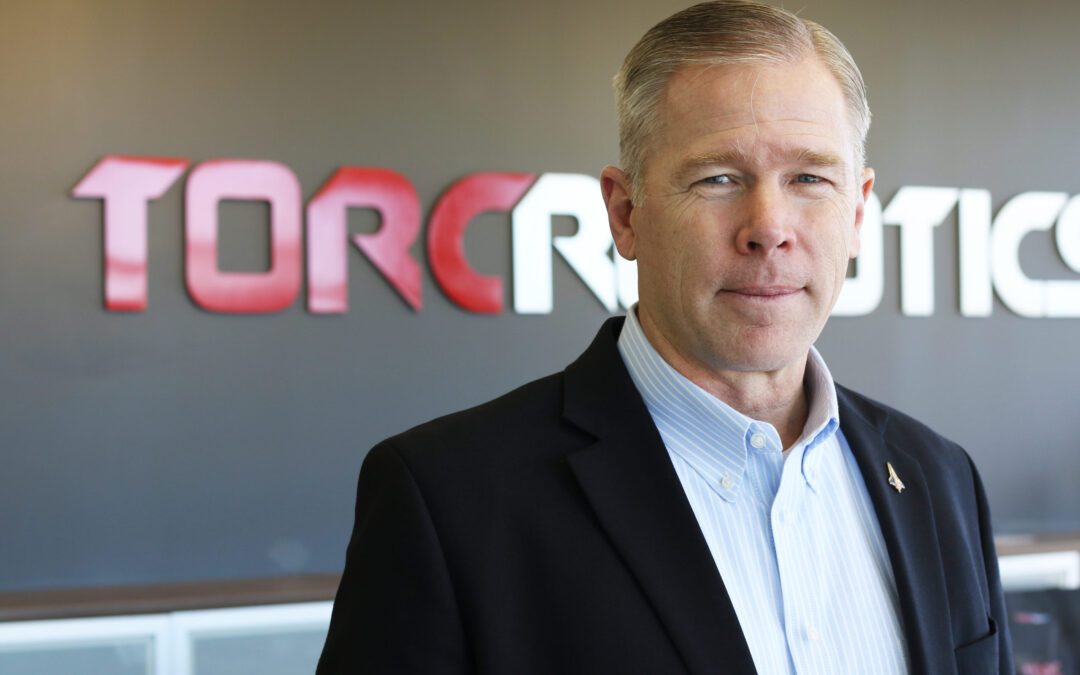
NASA safety expert joins Torc Robotics self-driving truck team
(Blacksburg, Va.) Former NASA safety engineering executive John Marinaro has joined Torc Robotics, the leader in self-driving trucking, as director of operational safety and testing — and member of the executive team. In this role, Marinaro has oversight and risk management responsibilities for Torc’s self-driving vehicle testing operations as well as corporate safety policies, procedures and auditing.
“We are very excited to have John join our team and lead our safety programs,” said Michael Fleming, Torc’s Founder. “Our mission is saving lives through self-driving technology, and safety is a key driver of our operations. NASA-level safety is required to commercialize self-driving trucks and we look forward to John applying skills and expertise gained in other pioneering organizations.”
Marinaro served as director of safety engineering technical excellence at the National Aeronautics and Space Administration (NASA) Safety Center. He was appointed to his position at the NASA Safety Center in 2009, after serving as the director of the NASA Aerospace Safety Advisory Panel during Space Shuttle Return-to-Flight following the Space Shuttle Columbia disaster.
“I carry that experience with me,” said Marinaro. It changed the course of his career, shifted his professional priorities, and set the standards by which he analyzes risk: “Test smartly and safely – Don’t hurt others. Don’t hurt ourselves. Don’t hurt our equipment.”
Marinaro intends to bring those standards and experiences to bear on his role with Torc’s senior executive team.
“Torc is doing a good job already,” said Marinaro. “I want to embrace their safety analysis procedures and make them more formal and structured as the company grows and the technology advances.”
How does he plan to achieve this for a new technology? By pulling in and improving the best risk management practices from multiple industries and focusing on structured and formal safety engineering.
“Engineers, by nature, like to create everything themselves, but we shouldn’t need to learn lessons that others have already mastered,” explained Marinaro. “If we can adopt and improve someone else’s best practices, we’ll get a lot farther a lot faster,” he said.
Risk is inevitable, Marinaro pointed out, especially when it comes to technology that has the potential to change the world: “There’s going to be inherent risk. We have to understand it, bind it, mitigate it, and operate within its constraints.”
The biggest challenges in operational safety are always the known unknowns and the unknown unknowns, said Marinaro.
“Our job is to anticipate when the system will operate unexpectedly, to understand why, and to make sure we’ve done enough before we put our self-driving technology on the road.”
Torc Robotics to expand self-driving truck testing to New Mexico with test center in Albuquerque
(Blacksburg, Va. – Sept. 3, 2020) Torc Robotics and Daimler Trucks will expand their joint self-driving truck on-road testing to New Mexico this month and establish a test center in the Albuquerque area. This announcement by Daimler Trucks and Torc coincides with the two companies celebrating their one-year partnership anniversary of Torc joining the Daimler Trucks family as part of the global Autonomous Technology Group.
At the end of August 2019, Daimler Trucks, the market leader in trucking, invested in a majority share of Torc Robotics, as part of its commitment to introduce self-driving trucks within the decade. Torc remains a separate entity fostering innovation in self-driving technology. Torc has a highly refined self-driving vehicle software stack that has been commercialized on multiple heavy-duty platforms and has been tested on public roads for more than 12 years. The Daimler Trucks/Torc team is committed to introducing self-driving trucks and the partners understood from the beginning that such a commercial undertaking would require a deep integration of the two teams.
The expansion of on-road testing routes follows a year of exploration by the partners who joined their expertise and experience to develop the foundational structure for an unprecedented large-scale technology commercialization. “Our deep partnership has enabled us to progress faster and further,” said Torc CEO and Founder Michael Fleming. “Torc has gained the data and perspective for developing technology for the trucking industry, plus a partner that is committed to safety. Daimler Trucks engineers have learned how the technology will impact truck design – and gained an experienced technology partner with a robust software stack,” he said.
“The partnership has enabled both our teams to move faster on developing Level 4 trucks,” said Dr. Peter Vaughan Schmidt, Head of Autonomous Technology Group at Daimler Trucks. “We will implement the results of our collaboration in the next phase of public road testing later this year.”
Major decisions from the collaboration include reinventing the truck chassis for self-driving functionality and developing a hub-to-hub operations model in collaboration with Daimler Trucks North America. The partners have also built a strong foundational infrastructure for commercializing at scale, including formalized rigorous testing and validation protocols, stringent truck safety driver certification processes, a next-generation simulation platform, and extended software capabilities.
Last September, Torc added Freightliner self-driving-equipped trucks to its fleet of test vehicles on public roads in Virginia. Results from those tests have been incorporated into a next-generation system that will be tested in both states. “Virginia provides us with a wide variety of conditions in close proximity to each other and to our engineering team. We will always continue to test here,” said Fleming. “We are expanding testing to new public routes in New Mexico to collect data in different situations along a major long-haul trucking route for the United States. Like Virginia, New Mexico’s highway system offers a range of road and weather conditions.” The team announced expansion plans in February, but they were delayed by the pandemic.
The partnership’s Level 4 self-driving trucks are deployed only after extensive testing and safety validation in simulation and on closed-course tracks in Madras, Oregon, at Daimler Trucks North America’s High Desert Proving Grounds. “Every truck we put on the road meets the high standards of Daimler Trucks and Torc Robotics,” Fleming said.
All automated runs require both a safety conductor and a highly trained safety driver certified both by Daimler Trucks and Torc Robotics. All safety drivers hold a commercial driver’s license and are specially trained in extreme vehicle dynamics and automated systems, making them a robust, safe choice for the operation of autonomous prototype vehicles. The trucks used for the testing will be hauling a trailer with added weight to simulate a load.
Torc has tested its self-driving vehicle system on multiple platforms and in many states, including a cross country trip in 2017. The self-driving truck on-road testing is on a commercial-scale timeframe. “There is a big difference between proof-of-concept or demonstration testing, and testing for commercial scale operations,” Fleming said. “Previously, when we commercialized our technology on other platforms, the development and testing followed a different timeline from proof-of-concept work. At Daimler Trucks’ scale, safety dictates our timeline. Torc’s mission is to save lives through self-driving technology; Daimler’s reputation is based on safety, reliability, and innovation.”
Commercializing self-driving technology for trucking requires extensive cooperation with customers, community leaders, regulators, policy makers, first responders, and drivers to ensure it has appropriate value in the marketplace and is accepted by society, according to Fleming.
Torc teams have been mapping routes in New Mexico to prepare for the on-road testing program and Torc is recruiting team members in the region. Positions include test engineer, safety conductor, safety driver trainer, site operation and office management.
Torc has also been recruiting heavily for its growing engineering team in Blacksburg, Virginia, for software engineering positions, including infrastructure and tools, web development, Linux, and cloud technology.
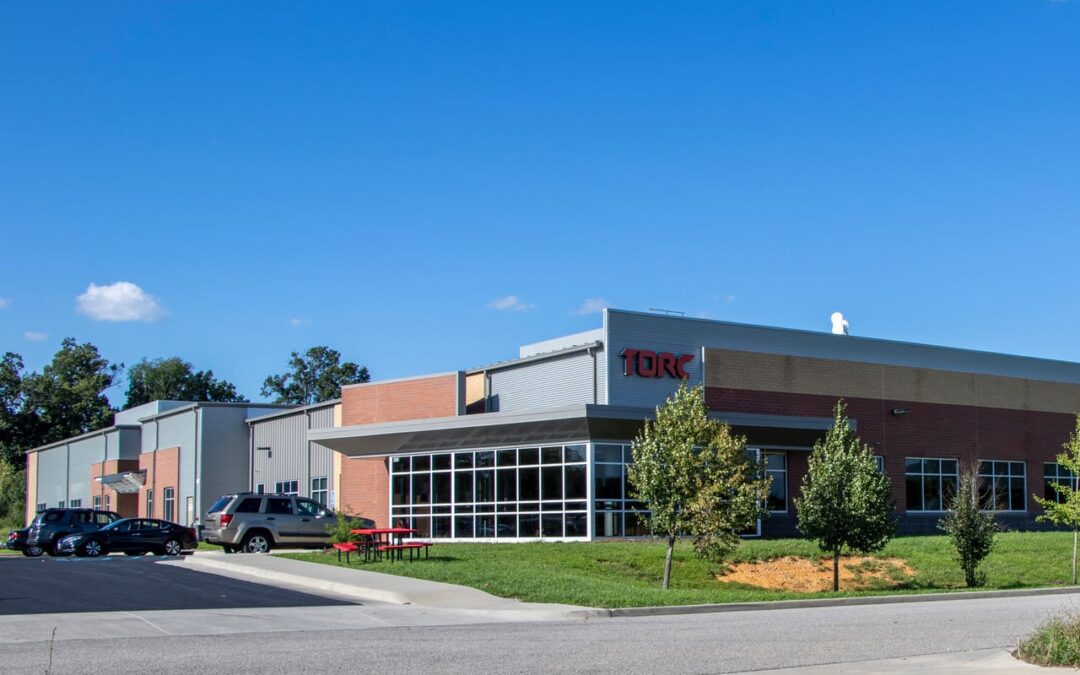
Torc Robotics Doubles Virginia HQ Facility, Continues Growth to Develop Self-Driving Trucks
(BLACKSBURG, VA) Torc Robotics doubled its headquarters facility this week in Blacksburg, Virginia with the completion of a major construction project. Although the nearly 16,000 square-foot expansion marks another milestone in Torc’s growing role as a powerhouse in automated truck technology, it is already insufficient space for the whole team.
Torc, the leader in commercializing heavy-duty, self-driving vehicle and trucking technology, has been on a growth tear for the past five years. The company got an extra bump last fall when Daimler Trucks acquired a majority stake in the firm, with a commitment to commercializing Level 4 automated trucks within the decade. The partners are working on integrating the technology while developing the trucks to accommodate necessary redundancies and streamline system integration.
“After embarking on the truck effort, we immediately needed more space for our growing team to collaborate and for the big trucks in our garage bays,” said Michael Fleming, Torc Founder. The expansion is 15,800 square-feet, two-stories tall, and encompasses a variety of uses including offices, community rooms, garage bays and parking. “We’re happy to have this extra space, but we have even bigger plans to accommodate our growing team,” Fleming said.
In May, Torc announced that the firm would increase company size by more than 50 percent. “This is just the start,” Fleming said. “Over the next several years, we will be hiring aggressively. Expect more announcements from Torc,” he said. “Commercializing automated trucks on public roads is complex and we will need additional talent to get us there.” Torc is continuing to recruit for many software engineering positions, including infrastructure and tools, web development, Linux, and cloud technology.
Torc’s headquarters is located in Blacksburg, Virginia, which is often considered an up and coming region for advanced technology. Torc will remain in Blacksburg, Fleming said, but will also establish other locations as the Level 4 truck technology and testing develops.
“We believe our location has been part of our success,” Fleming said. “I came out of Virginia Tech, so this seemed like the ideal place to launch a company. People in this area tend to pursue efforts for the longer term. They are also very hardworking and humble. I’ve always believed that a revolution and a disruption like bringing self-driving trucks to market is a marathon — not a sprint and it doesn’t happen overnight.”
While Torc’s headquarters expansion is complete, it is not fully occupied because of the pandemic. Some employees are beginning to move back into the offices, but many employees are still working from home at this time. “We’re looking forward to when we can all return to our office and enjoy working in the new headquarters space,” Fleming said.
About Torc Robotics
Torc Robotics, headquartered in Blacksburg, Virginia, is a member of the Daimler Trucks family. Torc offers a complete self-driving vehicle software and integration solution and is currently focusing on commercializing self-driving trucks. Torc has more than 10 years of experience in automating heavy equipment for safety-critical operations.

How experiences shape our view of safety at Torc
The strength of Torc’s winning teams comes in part from the diverse individual contributions from each team member. A variety of backgrounds, life experiences, and viewpoints can contribute to a wealth of perspectives on the importance of safety.
In Part 1 of our National Safety Month blog highlight, we outlined how Torc’rs view safety as a metric for success, and the importance of how the seemingly mundane tasks and procedures contribute to our overall goal.
